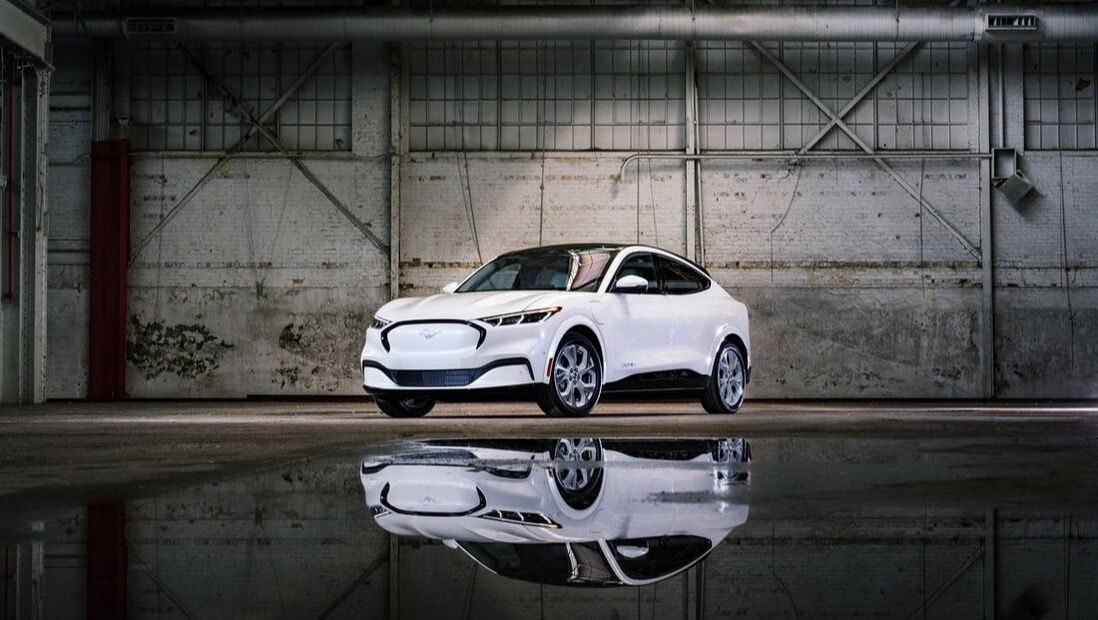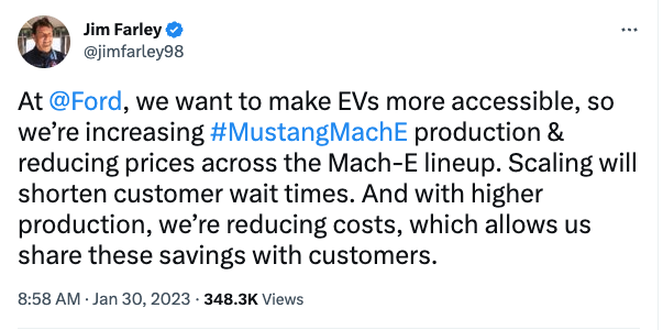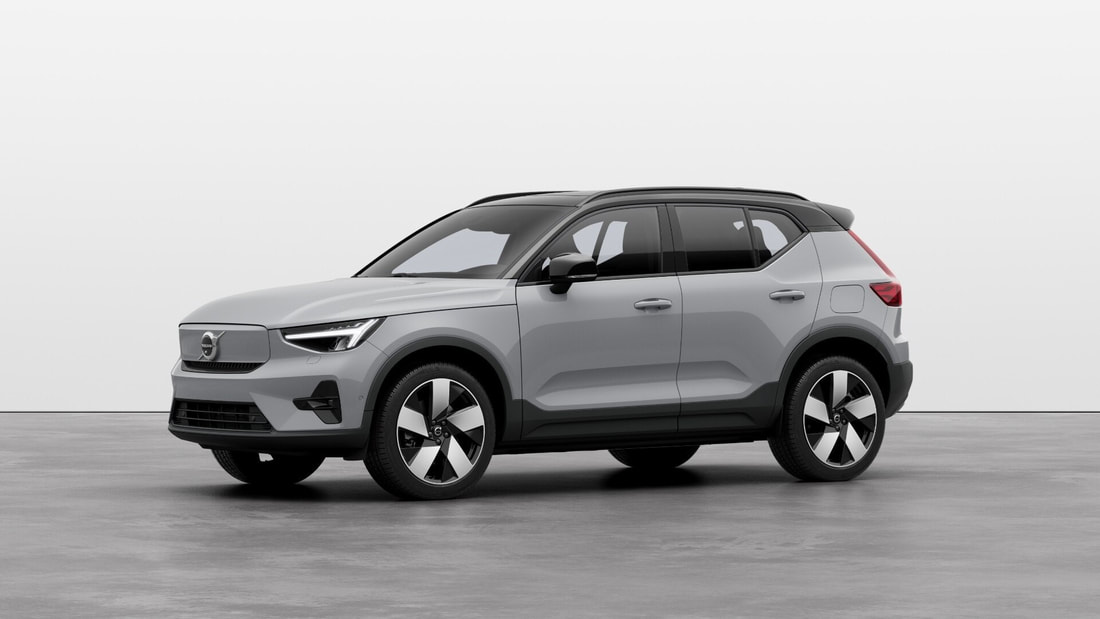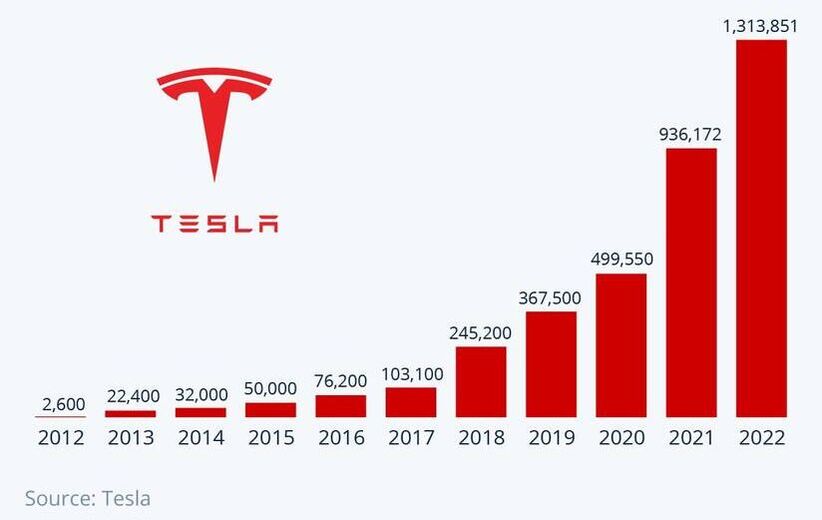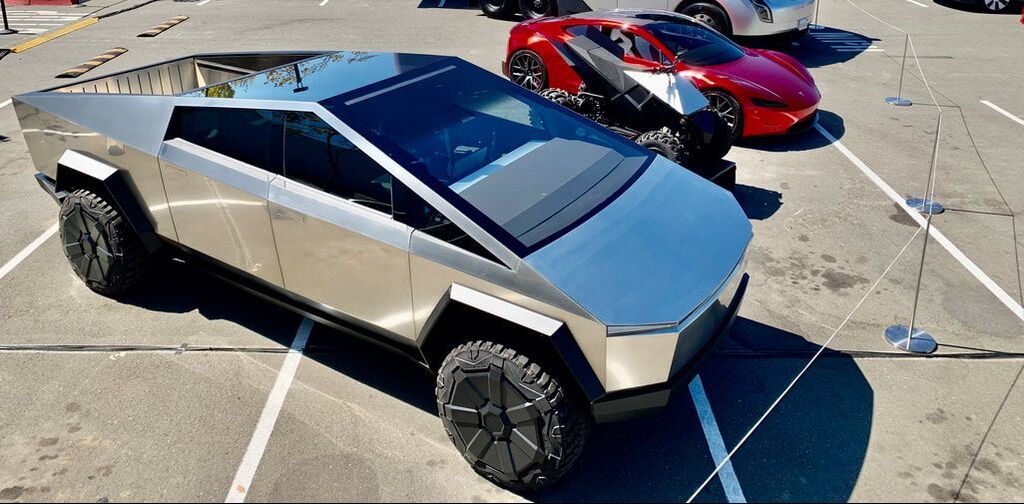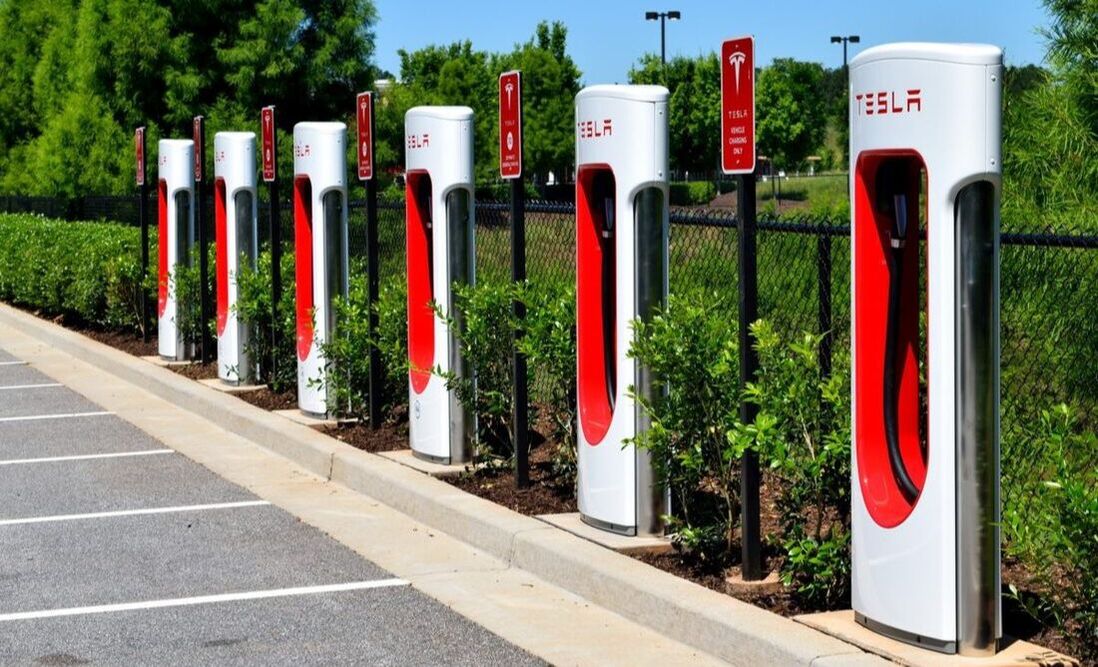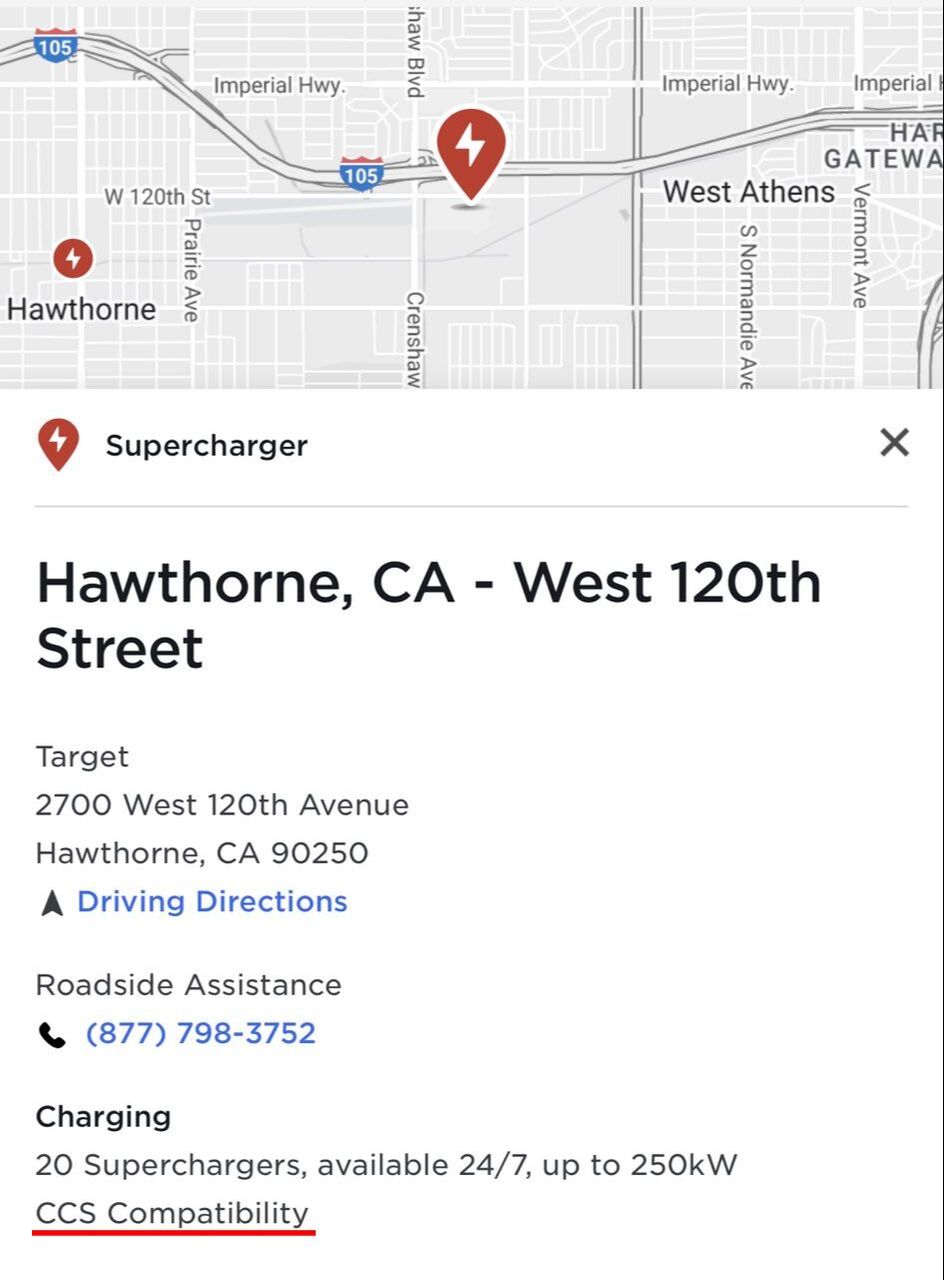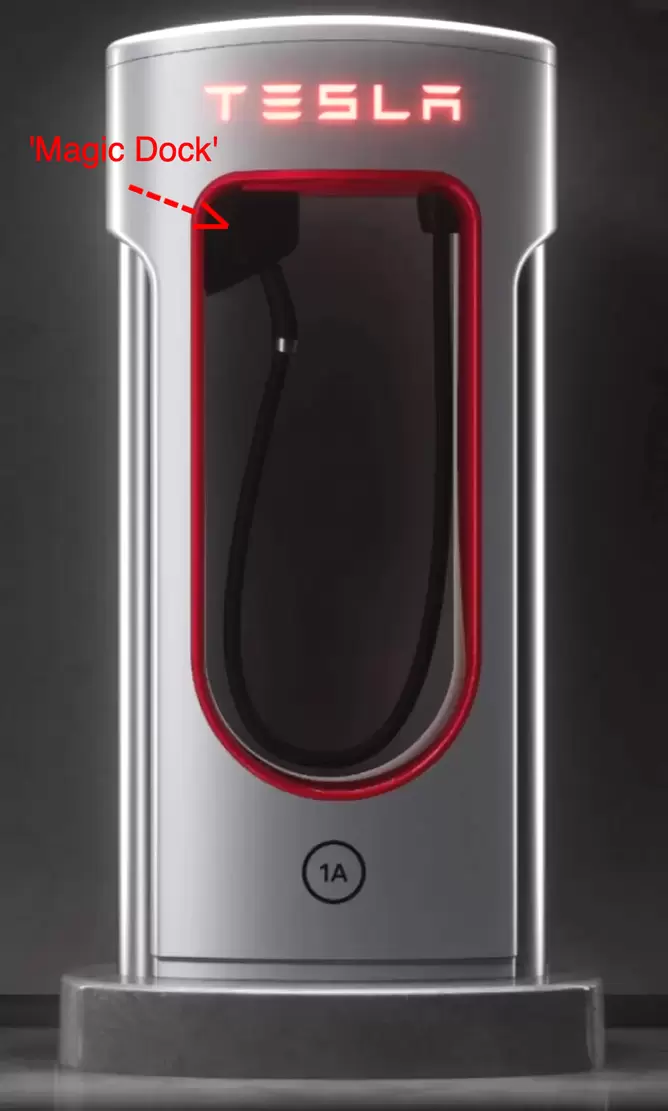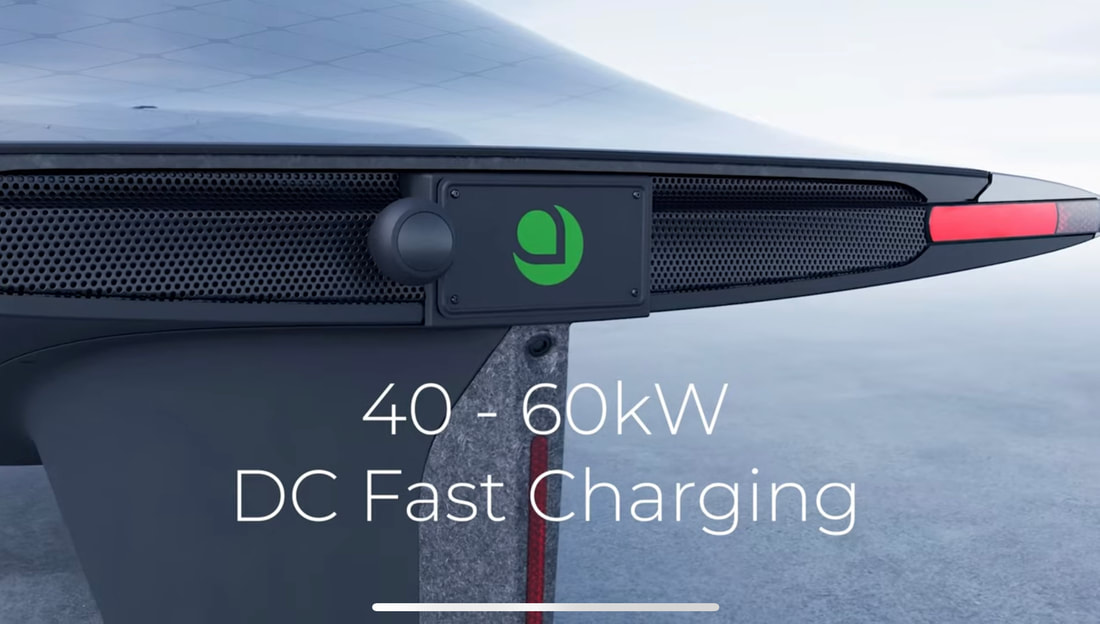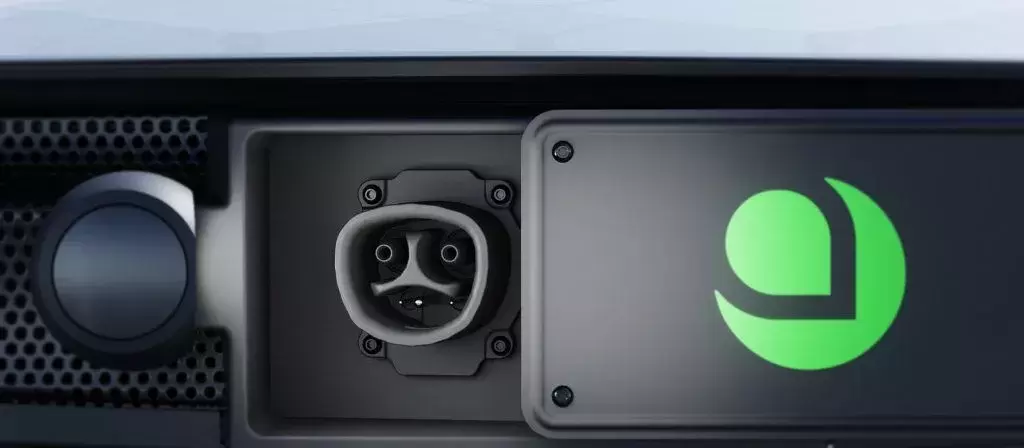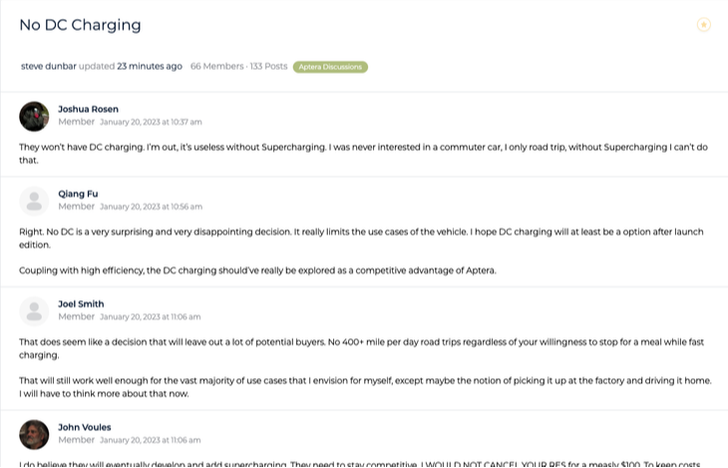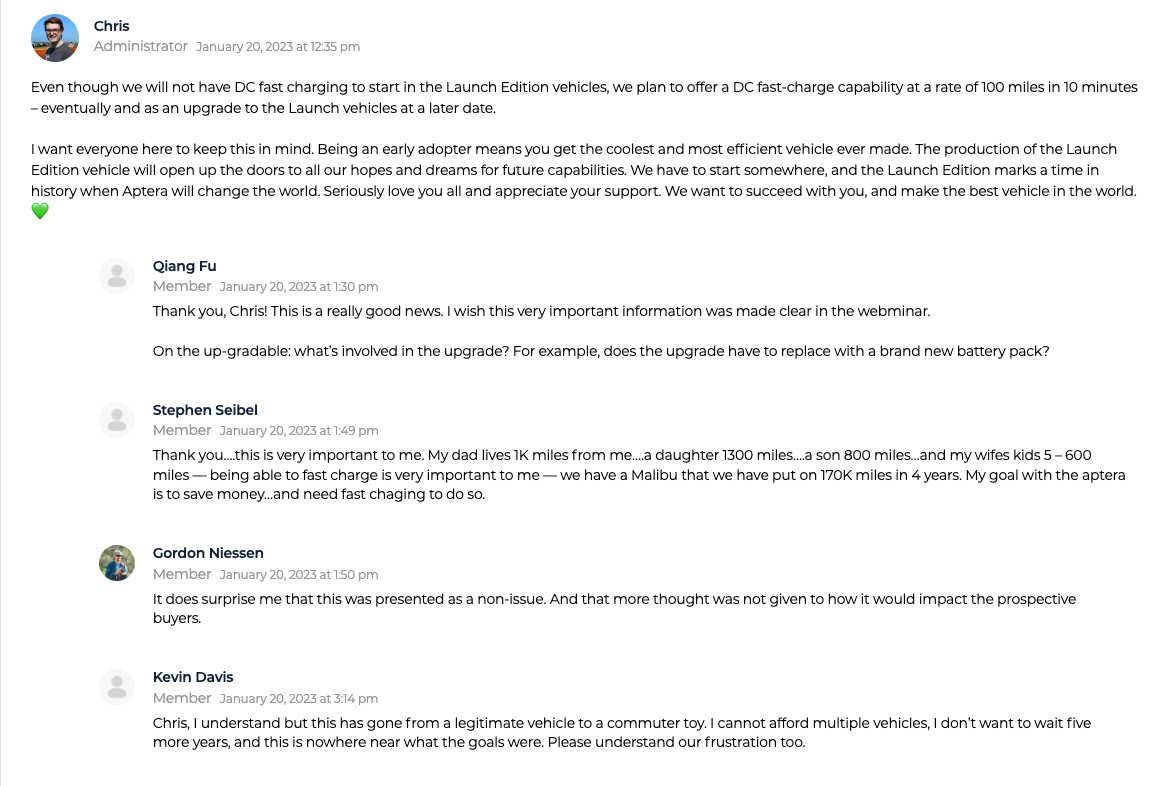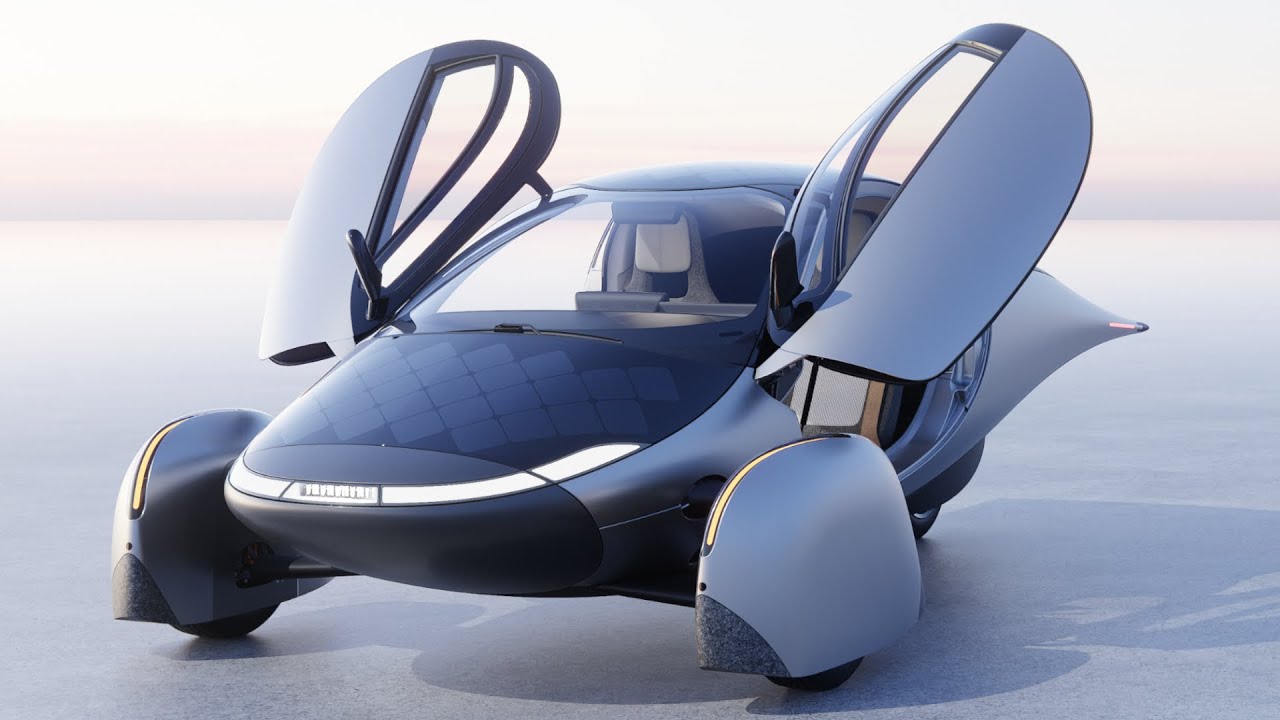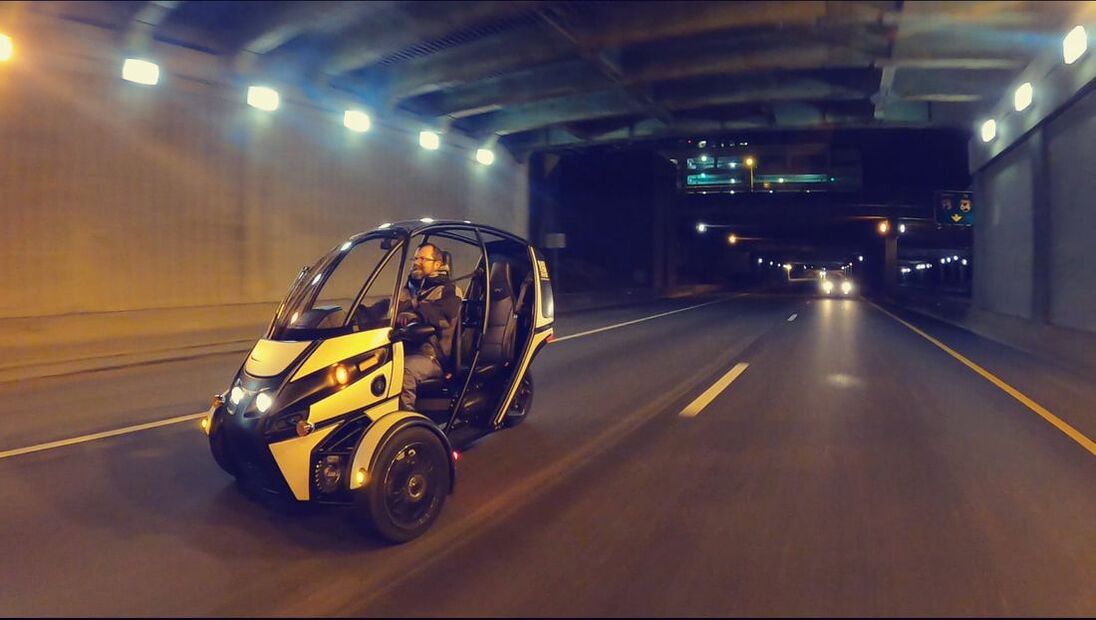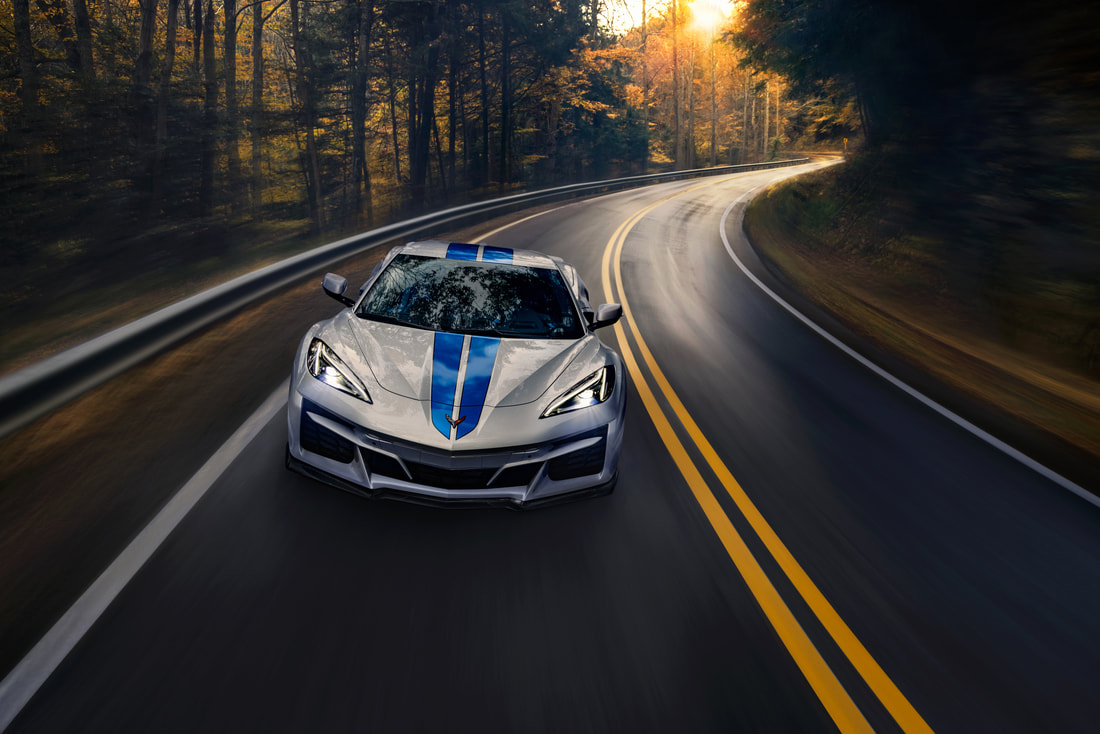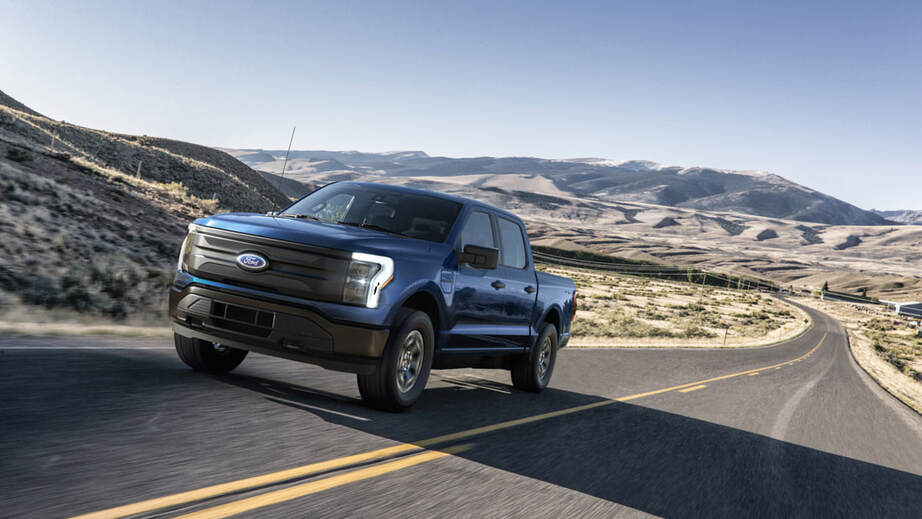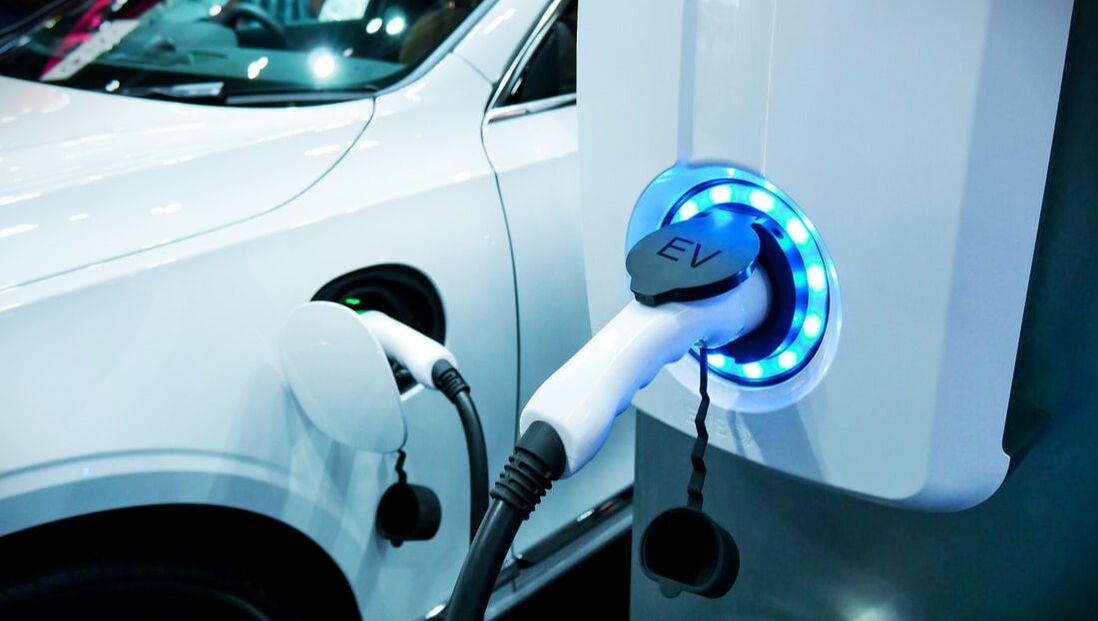|
On the heels of massive price cuts across the board by Tesla, Ford today cut prices of its Mustang Mach-E by as much as $5,900 in some cases. In a tweet this morning, Ford's CEO Jim Farley mentioned the price cuts along with an increase in production for the brand's best selling electric vehicle. "At Ford, we want to make EVs more accessible, so we’re increasing Mustang Mach-E production & reducing prices across the Mach-E lineup," Farley said, "Scaling will shorten customer wait times. And with higher production, we’re reducing costs, which allows us share these savings with customers." Ford ended 2022 with a production rate of roughly 78,000 Mach-E vehicles and plans to ramp production up to a rate of more than 130,000 units annually by the end of 2023. However, not every Mach-E model will bring profits for the company. During a media briefing, Ford's Chief Customer Officer for electric vehicle business, Marin Gjaja, explained that the price cuts will mean that some Mach-E trim levels will fall below a profitable point on a per-unit basis. However, cutting prices was a move that Ford needed to take if they want the Mustang Mach-E to stay competitive. "We are responding to changes in the marketplace,” Gjaja said during a media briefing, “As we look and want to stay competitive in the marketplace, we’re having to respond.” The company expects to make up for the loss of profits through the scaling of production and reduction of supply costs for materials. As production increases, the cost per-unit should drop. The 2023 Mach-E prices now start at roughly $46,000 to $64,000, placing it firmly in the midst of the competition from Tesla, Hyundai, Kia, and others. 2023 Mustang Mach-E Updated Pricing
Source: Ford Motor Co., *MSRP: Manufacturer Suggested Retail Price While these price changes affect future customers, existing customers who recently purchased (after Jan. 1, 2023) a Mach-E won't be left out to dry. According to the company, representatives will reach out to these customers with a "private offer" to quell any ill will. Customers currently awaiting delivery will automatically receive the adjusted prices.
There was no indication from Ford about which specific trim levels would or would not be profitable after these price cuts. The company had previously reported last year that they were struggling to produce the Mach-E profitably. “We actually had a positive bottom line profit when we launched the Mach-E, commodity costs have wiped that out,” Chief Financial Officer John Lawler said in June 2022. Before the end of last year, Ford even raised prices for the Mach-E to offset the rising cost of materials. “We want to make money. Don’t get me wrong, we absolutely want to make money,” Gjaja said. “Believe you me, I know that we need to be trying to get more profitable because we will be publicly accountable for that number.” More range, faster charging, and rear-wheel drive for fully electric Volvo C40 and XC40 models. As a part of their new package of product updates, they have now improved the range and charging speeds for the XC40 and C40 vehicles compared to the outgoing model year, increasing range by as much as 37 miles (60 km) on some variants. Furthermore, three new powertrain options are going to be offered on both vehicles including two RWD options, the first time that Volvo has gone RWD in 25 years, and a revised AWD performance model. Another first for the brand is the electric motors used for the C40 and XC40 models have now been developed in-house. In a press release from the company, COO and deputy chief executive Javier Varela said, "These updates are another big step in our work towards becoming a fully electric car maker by 2030. Range and charging times are new key factors for more and more of our customers, and these improvements make our fully electric models even more attractive than they already were.” The return of rear-wheel power The single motor with standard range is driven by a 175 kW permanent magnet electric motor, which provides a 3% increase in power output over the outgoing 170 kW single-motor front-wheel drive variant. In the XC40 Recharge single motor, the same 69 kWh battery capacity is carried over, but enhancements in cooling efficiency mean it can now deliver increased range and driving up to 240 miles according to the EPA test cycle. The range of the C40 Recharge single motor meanwhile improves up to 245 miles (EPA). A 10-80 per cent charge takes approximately 34 minutes using a 130 kW DC public charger. If you feel the need for more power and range, you can also opt for a larger battery coupled with a more powerful, 185 kW permanent magnet motor on the rear axle. This second new variant comes with an 82 kWh battery pack which boosts range up to 270 miles (EPA) for the XC40 Recharge single motor extended range and up to 275 miles (EPA) for the C40 Recharge single motor extended range. Here too, charging power has improved as the larger battery pack allows for charging at an updated top rate of 200 kW DC (previously 150 kW DC maximum), while a 10-80 per cent charge takes approximately 28 minutes. An updated all-wheel drive variant The all-wheel drive variants also benefit from these updates, realising even more impressive range improvements. The previous set-up of two 150 kW motors on the front and rear axles has been replaced by our in-house developed 183 kW permanent magnet motor on the rear axle and a new 117 kW asynchronous electric motor on the front axle. This new configuration, paired with an 82 kWh battery pack and overall efficiency improvements in battery cooling, means the XC40 Recharge Twin Motor AWD can now drive up to 310 miles (WLTP) on a single charge, a 38 mile boost over the previous iteration. The range of the C40 Recharge Twin Motor AWD has improved up to 315 miles (WLTP) from 280 miles (WLTP). No EPA estimates were released for this configuration. Exterior updates also help to improve efficiency where possible. For example, a new 19-inch alloy wheel for both XC40 and C40 Recharge not only boosts the overall look of the models, but it also helps to reduce drag through its aerodynamic design. Source: Volvo Cars
Tesla published their 2022 results showing record production and deliveries... sales growth that any other automaker would dream of having. In 2022, vehicle deliveries grew 40% YoY to 1.31 million while production grew 47% YoY to 1.37 million. Here's how it was broken down:
These results should come as no surprise to anyone who has been following the activities of the company. In 2022, Tesla opened two new factories, one in Berlin and the other in Texas, and has started to show significant production numbers from both locations.
The growth was so strong last year that the number of deliveries nearly surpassed the total number of deliveries the company had from 2012-2020. And, we can expect to see further growth from the company this year as well. During the recent Q4 earnings call Tesla CEO Elon Musk shared that he expects Tesla to be able to produce 1.8 million vehicles or more. “We’re saying 1.8 because there always seems to be some friggin’ force majeure thing that happens somewhere on Earth." Musk said, "We don’t control if there’s earthquakes, tsunamis, wars, pandemics, etc. If it’s a smooth year, without some big supply chain interruption or massive problem we have the potential to do 2 million cars this year. I think there would be demand for that, too.” While Cybertruck production won't likely contribute significantly to the overall number, it is expected that production will start this year at the factory in Austin, Texas. The larger expectation will be that Tesla continues to ramp production of the Model Y, already selling so many that it has become the 4th best selling vehicle in 2022, trailing only behind the Toyota Corolla, Toyota RAV4, and the Ford F-Series. During their fourth quarter earnings call this past Wednesday, Tesla had a number of good things to celebrate: Record production and deliveries, an increase in profits, and a significant increase in revenue. However, if you are a Cybertruck reservation holder, not everything was sunshine and rainbows. Since the unveiling of the Cybertruck in 2019, Tesla has given a significant number of updates to the expected start of production, delaying the original expectation by years. More recently, the company has guided that production will start this year, likely in the summer or early fall. During the earnings call, when asked directly about the Cybertruck’s expected start of production, Tesla CEO Elon Musk responded: “We do expect production to start, I don't know, maybe sometime this summer. But I always like to try to downplay the start of production because the start of production is always very slow. It increases exponentially, but it's always very slow at first. So I wouldn't put too much thought in start of production. It’s kind of when does volume production actually happen, and that’s next year.” So the name of the game for those in line for their cybertruck is waiting… but that isn’t something new. While we expect to see record overall production numbers in 2023 (like we saw in 2022), there likely won’t be more than a few thousand Cybertrucks produced. On to 2024 it would seem…
1/29/2023 Tesla's 'Magic Dock' Leaked In Advance of Supercharger Network Adding CCS CompatibilityRead NowTesla might be close to opening up access of the North American Supercharger Network to non-Tesla vehicles. With the launch of their non-Tesla Supercharger Pilot program in Europe, Tesla also added a filter to it’s ‘Find Us’ webpage map to display superchargers that were open to non-Tesla Vehicles. Earlier this month, Tesla also added the same filter to the US map… however only one supercharger was displayed, the one in Hawthorne, CA, which is conveniently located close to their design studio. In addition to adding the filter to the map on the website, Tesla also added the Hawthorne location as an option under the ‘charge your non-tesla’ menu in the mobile app. Selecting the stall revealed a rendering of a supercharger with Tesla’s Magic Dock. The ‘Magic Dock’ is a special CCS adapter that will be built into the existing Supercharger equipment and will unlock (but lock to the charging cable) for use with non-Tesla vehicles. At this time, both the filter and the image have been removed from the website and the mobile app, but thanks to twitter users Hayden Sawyer (@haydensawyer14) and Branden Flasch (@brandenflash) we have the images saved. So while we can’t see them now, it does appear that these accidental reveals indicated that Tesla is getting closer to opening up the Supercharger network here in North America and it’s likely that they first location will be the Hawthorne, CA site.
Unfortunately, like many things regarding Tesla’s future plans, we don’t have further details. However, the change to allow non-Tesla vehicles to use the Supercharger Network is likely to start this year and it will shake up the EV charging experience for owners of CCS equipped vehicles. With only one manufacturer (Aptera) currently planning to adopt Tesla’s NACS plug, it will be important for CCS equipped vehicles to be able to use the Supercharger units even if they haven’t invested in an adapter themselves… and it looks like the ‘Magic Dock’ might just be the answer to that problem. In order to roll out this change, Tesla will need to retrofit the ‘Magic Dock’ to the existing Supercharger equipment, so it should be fairly easy to recognize when access to the network is imminent. I, for one, am super excited about this. I look forward to seeing the charging experience for CCS equipped vehicles improve. And, one of the best ways to do that is giving them access to Tesla’s network because it is one of the most reliable charging networks here in North America. In a video update today, Co-Founders and Co-CEOs Steve Fambro and Chris Anthony shared the news that many Aptera reservation holders were waiting for: DC Fast Charging WILL be standard on Aptera vehicles. In the video, the pair explains the process of designing and choosing the hardware on which they will eventually settle for the final production vehicle design. The current intention for fast charging capability is the 40 kW - 60 kW range. "At a minimum, the heating from all of the busbars we have, 40kW is below the limit" Fambro explained, but as current goes up, the sizes of the busbars and cables need to be increased, but that "through validation we'll see how higher we can get above 40 kW. But I believe it's a 40 kW minimum up to 60 kW after validation." "It's really exciting that every Launch Edition Aptera will already have the technologies incorporated in them to be compatible with the supercharger network," Anthony added, hinting at the possibility of using the Tesla's network of high-powered charging stations. There is no news yet on if Tesla will open up their Supercharger network to non-Tesla vehicles, although that wouldn't be a surprise considering that they have already started doing so in Europe. This exciting news comes on the heels of a major backlash from the Aptera community following the recent presentation of the Launch Edition vehicle. While development of the DCFC capability for the Aptera vehicles had previously been paused, it seems now that the company will focus on it's final development. When the people ask... they shall receive. See the full video here: During the Launch Edition online presentation, Aptera Co-Founders and Co-CEOs Chris Anthony and Steve Fambro shared that the initial production of Aptera vehicles will not have DC fast charging capability. As you might imagine, this caused a lot of reservation holders to speak up about their displeasure with that decision. Many taking to Aptera's community forum to share their thoughts and feelings on the matter... some even threatening to cancel their reservation. However, there is good news on the horizon for those, like myself, wanting to have the ability to recharge quickly while on the road. Chris McCammon, Content Specialist for Aptera, responded to the forum post saying, "Even though we will not have DC fast charging to start in the Launch Edition vehicles, we plan to offer a DC fast-charge capability at a rate of 100 miles in 10 minutes – eventually and as an upgrade to the Launch vehicles at a later date." During the Launch Edition presentation, this was not clear. However, his comment may come be reassuring to many who were looking forward to having their Aptera vehicle capable of fast charging. Previously the company discussed having charging speeds up to 60 kW (100 miles of range in 10 min.) Want to order your own Aptera? Consider using my referral link for 30% off your deposit ($30).
Yesterday, Jan. 20th, Aptera showed their Launch Edition vehicle to the world in an online presentation. Steve Fambro, Co-Founder and Co-CEO, explained: “We’ve solved the equation for a more efficient way to travel by harnessing the power of the sun, and we’re excited to introduce our Launch Edition vehicle to the world. Our tireless efforts have resulted in the Aptera vehicle, that can take you where you want to go using the creative energy directly from our sun and efficiently converted into free movement.” Aptera’s Launch Edition was created with one purpose in mind — energy efficiency. Its unique shape, ultra-lightweight, and ultra-strong materials allow Aptera to slip through the air using a quarter of the energy compared to other electric and hybrid vehicles on the road today. Equipped with roughly 700 watts of proprietary solar technology, Aptera drives up to 40 miles per day directly from the sun’s rays, making it possible to never plug in to charge again. Stellar Charging InfrastructureWith Aptera’s solar technology, consistent access to a charging station or even a plug and socket isn’t necessary. Aptera’s Launch Edition comes integrated with a solar charging package allowing most people to drive for weeks, even months, without ever having to plug in to charge. In a location with very high sun exposure like Southern California, the average American driver would never have to plug in, based on the daily average of 29 miles. In a location with medium sun exposure such as New York or Chicago, you will only need to plug in roughly three times per year. Plus, with Aptera’s efficient vehicle platform, any standard power outlet in the world becomes a place to charge your vehicle. When plugged into a 120V outlet, Aptera’s Launch Edition can still charge over 13 miles per hour or roughly 150 miles overnight. Revolutionary AssemblyIn partnership with CPC Group, Aptera has developed an efficient and streamlined process for manufacturing their Launch Edition vehicles. These methods allow for quicker vehicle deliveries and a better use of raw materials. One of the most important aspects of this process is Aptera’s specialized composite body, or Body in Carbon – BinC. The resulting BinC takes much less time to assemble and yields quality and repeatability that is truly a new paradigm for manufacturing composite vehicle bodies and closures, especially when compared to other steel or aluminum vehicles. This process is only just the beginning of Aptera’s plans to move solar mobility forward. After the company’s Launch Edition production line is up and running, Aptera expects eight different assembly plants to be in operation around the globe by 2028. Specifications:
Aptera is finalizing the fourth and final phase of its product development, Delta. As part of this phase, Aptera will complete crash testing and validation. Once completed, Aptera plans to scale quickly into full-scale single shift production of 10,000 vehicles per year. From there, Aptera will expand its output to dual shift 20,000 vehicles per year out of its Carlsbad, California facility.
“While our delivery timeline is funding dependent, our goal is to begin production by the end of 2023,” Chris Anthony, Co-Founder and Co-CEO said. “Once we meet our fundraising objectives, we will be able to provide a more accurate delivery timeline.” With over 40,000 reservations, the production of Aptera’s Launch Edition vehicle symbolizes the dawn of a new era for the company as it shifts toward manufacturing. For more information on Aptera’s Launch Edition, download the full spec sheet here. “Our Launch Edition is our chance to show the world something that’s never existed before,” says Anthony. “Our identity at Aptera is about transformation, reinvention, and surprises. The Launch Edition is our chance to lead a movement that’s for everyone. We are solar mobility, and we are the future.” The future of Arcimoto, the Oregon-based maker of fun, three-wheeled electric vehicles, is unclear. Earlier this week in an SEC filing the company disclosed that they "have halted [their] production of vehicles and will require substantial additional funding to resume production, which may not be available to [them] on acceptable terms, or at all, and, if not so available, [they] will be required to cease [their] operations and/or seek bankruptcy protection." The company has faced many recent challenges that included supply chain issues, a change in leadership, and the hemorrhaging of cash reserves as they work to ramp up production of their FUV and other similar vehicles. On January 19th, the company successfully closed a $12 Million public stock offering which may help hold off bankruptcy in the short term, but if the balance sheet doesn't significantly improve, it may be an inevitability. In their Q3 Financial update, the company reported: Total revenues for the third quarter of 2022 increased 35% to $2 million as compared to $1.5 million in the third quarter of 2021. YTD September 30, 2022 revenue increased 16% to $4.2 million as compared to $3.6 million in 2021. The Company incurred a net loss of approximately $17 million or ($0.38) per share, in the third quarter of 2022 compared with a net loss of $11.5 million or ($0.31) per share, for the same prior-year period. The Company had $65.6 million in total assets, $4.2 million in cash and cash equivalents, and $27.6 million in total liabilities as of September 30, 2022. About Arcimoto, Inc.Arcimoto is a pioneer in the design and manufacture of rightsized, ultra-efficient, incredibly fun electric vehicles for everyday mobility. Built on the revolutionary three-wheel Arcimoto Platform, their vehicles are purpose-built for daily driving and local delivery, all at a fraction of the cost and environmental impact of traditional gas-powered vehicles. Based in Eugene, Oregon, the Arcimoto team is dedicated to creating world-class EVs that make the world a better place. For more information, please visit Arcimoto.com.
The E-Ray is the most powerful, best handling Corvette ever made...This past Tuesday, Jan. 17th, Chevy celebrated the 70th birthday of the Corvette by giving it an electric motor. I’d say that’s a good way to celebrate, right? This revolutionary shift in propulsion design comes from the desire to make the Corvette better: faster, better handling, and in some cases almost silent. Because the rear of the car still has the 495hp 6.2L V8 taking up space, Chevy positioned the electric motor in the front of the car. The motor puts out 160 hp and 125 lb-ft of torque and is paired with a 1.9 kWh li-ion battery that is positioned down the center of the car between the driver and passenger. The addition of this electric powertrain means that the E-Ray is now the best performing Corvette from the company ever. 0-60 mph comes in only 2.5 seconds and it’ll run down the 1/4 mile in 10.5 seconds at 130mph. One new feature of the E-Ray that was never available on any other Corvette model is what the company is calling “stealth mode” that drives the car only with the electric motor on the front wheels… for about 3 miles or so. Remember, it’s still a very small battery. Pricing for the E-ray jumps considerably from the base model Corvette Stingray at $64,500 to $104,295. Given that the performance of the base model is still 2.9 seconds 0-60 with a 194 mph top speed, I’m really curious to see how many E-Ray models sell over the other configurations. It’ll also be interesting to see how traditional buyers of the Corvette respond to the electrification of the brand. Only time will tell, but I’m starting to get excited and can’t wait to see what Chevy does when the Corvette ditches the gas engine entirely.
Performance:
Electrification System:
Source: Chevrolet
August 2022 saw a brief drop in demand for electric vehicles. Consumer desire may fluctuate from month to month, but the overall trend is clear: More people want EVs in 2023 than ever before. What caused the short decline in demand, and why do electric car commercials seem to be popping up constantly? The answer is multifaceted. What Caused The Dip? According to the car-buying trends website Edmunds, 34% of vehicle shoppers last year cited gas prices as a very important factor in their purchasing decisions. A full 12% said it was the most important. Consistent with this data, Edmunds reported that one-quarter of site visitors shopped for an EV in March 2022 while gas prices were high. As gas prices fell in August, however, only 17% of shoppers wanted an electric vehicle. Why Are EVs Taking Off Overall? Fuel prices will always fluctuate. Although there may be a slight dip in EV demand while gas prices are low, the larger trend is that electric vehicle sales are climbing. More people are buying EVs than ever due to tax incentives to go electric, increased public awareness of climate change and the desire to charge their cars from the comfort of their homes. Consumers got a preview of what life would be like without tailpipe emissions in March 2020. Air quality vastly improved in some areas as transportation ground to a halt, to the point that buildings previously shrouded in smog were unveiled to the public’s eye. This firsthand lesson in air pollution prompted people to rethink their vehicle choices. People already car shopping decided to cut ties with internal-combustion engines forever, vowing to reduce their ecological footprint and save money on gas in the process. The choice to go electric made a lot of sense, especially in cities, where charging stations are easier to come by. Simultaneously, improved battery technology and charging station infrastructure eased consumers’ range anxiety. Fewer people today are worried that they won’t make it to a charging station in time. Furthermore, electric vehicles are no longer synonymous with dinky little European cars, a hurdle manufacturers had to overcome to appeal to an American audience. There are electric SUVs and pickups as well. The trend of relegating electric batteries to clown cars seems to have lost momentum since larger families want room for their kids, ranchers need trucks that can haul hay and — let’s face it — most people want a normal-looking ride. As EVs expand to a broader audience, the market is no longer just edgy early adopters looking to make an environmental statement. Making EVs blend in with city traffic is an important step toward normalizing their use. Why Demand Outweighs Supply Many shoppers want to buy EVs in the U.S., but there aren’t enough electric cars for sale right now. In some cases, waiting lists stretch years into the future, and electric vehicle owners are selling their used cars for a premium — sometimes fetching a higher price than they paid at the dealership. Why? Soaring global lithium prices, a dearth of EV battery recycling technology, chip shortages and unevenly distributed subsidies all contribute to the problem. However, as kinks in the supply chain work themselves out, manufacturers will almost certainly be able to match the EV demand. It’s only a matter of time. Additionally, the Inflation Reduction Act will start giving tax credits for certain EV models, bolstering the electric vehicle market. 2023 is set to be a fantastic year for EV sales. A Hopeful Sign The fact that so many people want to buy an EV is good news. Society can’t run on gas guzzlers forever, especially as the population grows and people are forced closer together. Electric vehicles emit no air pollution, reduce dependence on foreign oil and gas, allow people to charge their cars overnight, and make the roads quieter. If we’re lucky, they might even look good in the process. About the Author: Jane Marsh works as an environmental writer, covering topics such as sustainability and green living. She is also the founder of Environment.co. Jane Marsh is an opinion columnist for the CEOWORLD magazine. Connect with her through LinkedIn.
One of the biggest benefits to electric vehicle ownership is having the ability to "refuel" at home. Waking up every morning with a full "tank" (battery) is one of the advantages EVs have over other vehicles, and charging at home is significantly less expensive than using public fast chargers. That being said, it's really important to make sure that you have the appropriate equipment that has been designed for your and your vehicle's needs.
Finding a charger that fits your budget but also gets the job done is one of the first steps to take before or just after bringing your EV home. Things To Consider Before Purchase...
While having the ability to fill up overnight while you're sleeping has its advantages, you want to consider a few things before choosing an EV charger.
For more EV Charging Tips we have provided a few EV 101 Articles:
Choosing the Best EV Charger for You
EV chargers come in many different varieties designed to work on 110v, 240v, or sometimes both. The higher the voltage, the higher the charge rate (generally). Most EV owners choose to go with 240v chargers, but if you have a vehicle that doesn't charge quickly -or- you don't need to recharge very much daily, choosing to use a charger only on 110v could save you money. Regardless of what you choose, it is our recommendation to contact a licensed electrician to make sure that your house wiring is capable of handling your needs. We also recommend that your EV charges on either a dedicated circuit or that you use a smart splitter to share the power with an existing appliance (usually the clothes dryer).
We've put together a list of six EV chargers that we believe are the best choices on the market for 2023, three wall-mounted choices and three portable choices as well:
ChargePoint Home Flex
Product Description:
Charge Point Home Flex is the newest, fastest and most advanced Level 2 home charger offered by Charge Point, charging up to 50 amps and adding up to 37 miles of driving range per hour of charging. Flex can be installed to charge upto 50 amps, allowing drivers to pick the speed that's right for them and their home’s electrical supply. Charge Point Home Flex is a Wi-Fi-enabled charging station and offers smart charging features using the Charge Point app, including the ability to set a charging schedule, get reminders to plug in, see all of your charging history in one place, connect with Alexa, and more. Flex is UL Listed for electrical safety, ENERGY STAR certified for efficiency and comes with a 3-year and 24/7 customer support. Charge Point Home Flex can be installed by any electrician, indoor or outdoor, to charge at 16A to 50A, and comes with a 23-foot charging cable and either a NEMA 14-50 or 6-50 plug. Plug-in installation with a NEMA 6-50 or 14-50 outlet requires circuits/breakers rated 40A or 50A. For other circuit ratings, the plug is easily removed for hardwired installation. Flex can be installed outdoors using either a hardwired installation or a weatherproof NEMA receptacle. JuiceBox 40
Product Description:
JuiceBox 40, the best-selling smart home electric vehicle charger, combines performance and value. Enjoyed by thousands of satisfied EV drivers, JuiceBox delivers all the safety and smart charging features you need to make home charging convenient, reliable, and cost-effective. Built on the universal J1772 charging standard, JuiceBox is a Level 2 charging station that can power all electric vehicles on the market today, including Teslas via a Tesla-provided adapter. The Juice Box comes with a built-in cable rack and security lock for versatile use, indoors and out. Grizzl-E Duo
Product Description:
Lectron Portable
Product Description:
Splitvolt Portable
Product Description:
Lectron Portable (110 volt)
Product Description:
|
Details
Categories
All
Archives
June 2024
|
- Home
-
Learn.
-
EV 101
>
- EV Terminology
- What is an EV?
- Pros and Cons
- EV Types
- Are used EVs a good option?
- How much range do you really need?
- Real world range
- Types of charging and charging stations
- How Long Does It Take To Charge
- EV Charging Apps
- All about EV Batteries
- Regenerative Braking
- BEV System Components
- EV Maintenance
- EV Mythbusting >
- Podcast
- Newsletter
- Magazine
- Articles >
- Vehicle Reviews
- Alternative Fueling Station Locator
-
EV 101
>
- Connect.
- Experience.
- Deals
- Shop
- About Us

